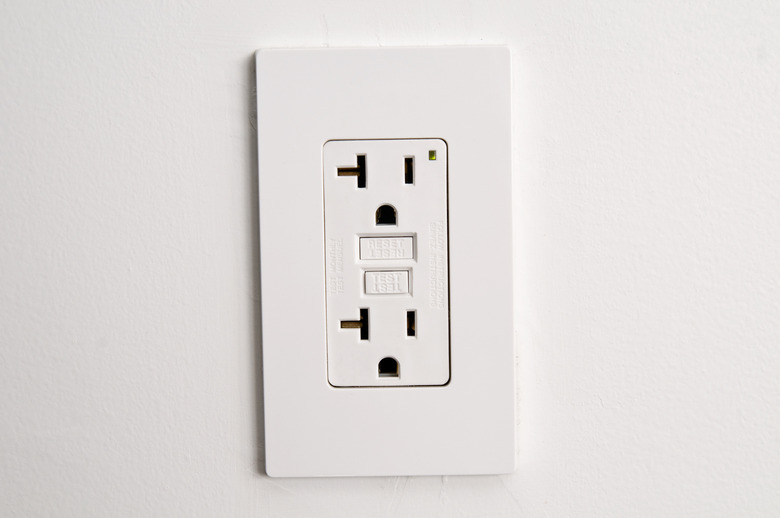How To Check If An Electric Wall Outlet Is Grounded
Most homes built in the past several decades have fully grounded electrical outlets, recognizable by the third U-shaped receptacle between and below the hot and neutral receptacles. The ground wire connected to the circuit allows any built-up electricity from a sudden surge to travel through the ground wire and into the earthing rod to dissipate. Just because your outlet has three prongs doesn't mean it's properly grounded, however. A faulty ground can leave your appliances and home vulnerable to electrical fire. You can use a multimeter to test your outlets for proper grounding.
Step 1
Connect the multimeter's probes to the main body of the meter. Red goes in the positive receptacle, marked with "Volt." Black goes in the negative or ground terminal, marked with "COM."
Step 2
Turn the multimeter to the highest AC voltage range available. AC voltage is labeled as either "VAC" or "V~."
Step 3
Insert the two test leads into the hot and neutral parts of the outlet. Red goes to the smaller prong and black goes to the larger one. The smaller prong is the hot wire, which carries current from the main box to the outlet. You should get a reading of approximately 120; this verifies that the outlet is receiving power.
Step 4
Remove the black lead and put it in the ground outlet. Your reading should be the same. If not, the outlet is improperly grounded. It is also possible that the wiring has been reversed, with the hot on the left and neutral on the right. Plug the red lead into the left-hand outlet and the black lead into ground to be sure. If you get a reading, the wires are reversed. If not, there is no grounding.
Warning
Always grip the multimeter leads by the rubber probes to prevent electrical shock.
